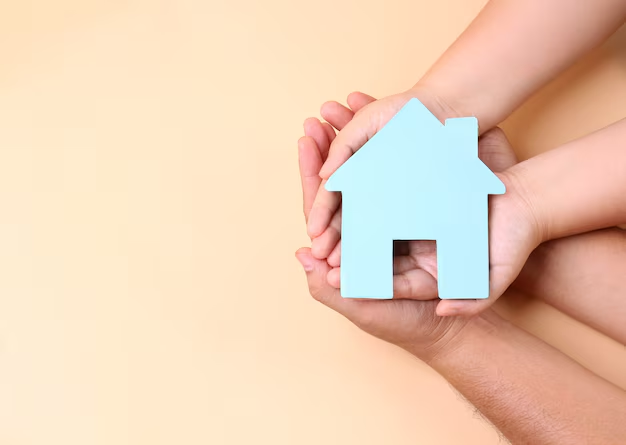Safeguard Your Sanctuary: Essential Tips to Prevent Falls at Home
Falls at home are a common concern, especially as we age or for those with mobility challenges. However, creating a safe living environment can significantly lower the risk of falls, promoting independence and peace of mind. This article delves into practical strategies to help prevent falls in your home, from optimizing your living space layout to adopting safer habits. Let’s explore these protective measures to ensure your home remains a sanctuary of safety and comfort.
🏠 Creating a Safe Living Environment
Understanding the Risks
The first step in fall prevention is understanding why they occur. Factors contributing to falls include cluttered spaces, poor lighting, unsuitable footwear, and slippery floors. Physical health factors such as balance issues, vision problems, and certain medications can also increase fall risk.
Decluttering and Organizing Your Space
A cluttered home is a hazardous home. Keeping pathways clear can dramatically reduce the risk of tripping and falling. Here’s how to organize effectively:
- Ensure clear walkways: Arrange furniture to allow free movement. Avoid placing low tables and cords in walkways.
- Regularly clean up clutter: Discard or organize loose items like magazines, toys, or shoes.
- Utilize storage solutions: Invest in shelves, baskets, and hooks to keep items off the floor.
Enhancing Visibility and Lighting
Lighting plays a crucial role in fall prevention, especially in dim areas such as hallways or staircases. Here’s a checklist to brighten your home safely:
- Install adequate lighting: Use bright bulbs in frequently used rooms and add nightlights in bathrooms and hallways.
- Remove shadows: Use blinds, curtains, or strategically placed lamps to eliminate dark areas.
- Consider smart lighting: Motion-sensor lights or remote-controlled lighting systems can be practical, especially for those with mobility challenges.
Non-Slip Everywhere: Floors and Bathrooms
Slippery surfaces are a significant fall hazard. Here are ways to increase traction in crucial areas:
- Non-slip rugs and mats: Place rubber-backed rugs or non-slip mats in bathrooms and at entryways.
- Floor treatment: Texturized wax or nonslip coatings can improve traction on hardwood or tiled floors.
- Bathroom safety: Install grab bars near the toilet and shower; use a shower chair or raised toilet seat for added stability.
👟 Choosing Appropriate Footwear
Believe it or not, what you wear on your feet at home is paramount to safety. Properly fitting, non-slip footwear can prevent slips.
- Select shoes with good grip: Opt for sneakers or rubber-soled shoes rather than slippery slippers or socks.
- Ensure proper fit: Shoes that are too loose can easily cause tripping.
- Consider orthotic solutions: If foot issues contribute to balance concerns, a trip to a podiatrist may help.
🧘♀️ Strengthening Balance and Coordination
Enhancing strength and coordination is vital for maintaining stability and reducing fall risk.
Exercise Insights
Regular physical activity focused on balance, strength, and flexibility significantly decreases fall incidents.
- Balance exercises: Incorporate balance exercises like single-leg stands or tai chi into daily routines.
- Strength training: Strengthen core and leg muscles for improved stability.
- Flexibility exercises: Stretch regularly to maintain joint mobility and fluid movements.
Consulting a Physical Therapist
A physical therapist can develop a personalized plan to enhance physical stability. They may recommend certain exercises, assistive devices, or adjustments to your home setup to improve safety.
🏥 Regular Health Check-Ups
Keeping tabs on your health plays a pivotal role in fall prevention.
Vision, Hearing, and Medication Adjustment
- Regular eye examinations: Correct vision issues and update prescriptions regularly to avoid missteps.
- Hearing tests: Balance may be affected by hearing loss; regular check-ups can help.
- Review medications: Some medications or combinations may cause dizziness; consult a healthcare provider to adjust doses if needed.
Managing Chronic Conditions
Chronic ailments like arthritis, diabetes, or hypertension may affect balance and coordination. Follow prescribed treatments and lifestyle adjustments to manage symptoms effectively.
💼 Holistic Home Safety
Adapting one's living environment involves more than just removing tripping hazards. Employ holistic strategies for safety and peace of mind.
Smart Home Technologies
Incorporating technology can enhance safety and independence:
- Personal emergency response systems (PERS): Consider wearable alert devices or systems that call for help at the push of a button.
- Home automation devices: Use smart plugs, thermostats, and home assistants for voice-activated tasks, reducing the need for unnecessary movement.
Family and Community Involvement
Engage family and friends in your safety plan:
- Regular check-ins: Arrange visits or calls with family or neighbors.
- Community programs: Explore local community programs aimed at fall prevention and social engagement.
📋 Key Takeaways for Fall Prevention
To encapsulate these strategies into actionable steps, here’s a brief summary to keep handy:
- 📦 Declutter: Transform your living spaces by organizing and storing items properly.
- 💡 Brighten Up: Use proper lighting in all areas, focusing on shadows and night lighting.
- 🦶 Footwear Matters: Choose non-slip, well-fitted shoes for indoor use.
- 💪 Start Exercising: Engage in balance and strength exercises regularly.
- 👨⚕️ Routine Health Check-Ups: Keep appointments for vision, hearing, and medication reviews.
- ❤️ Use Technology: Consider smart home devices for enhanced safety and communication.
- 🤝 Stay Connected: Involve family, friends, or community for continual support.
Focusing on these fundamental areas allows us to create a home that's not just stylish or comfortable but also an empowering and secure environment. Remaining proactive about fall prevention means enjoying greater independence and quality of life at home. Embrace these strategies to stand strong, stay safe, and live well.

Related Topics
- 10 Tips For Healthy Aging
- Benefits Of Meditation For Seniors
- Best Exercises For Seniors To Stay Fit
- Common Health Conditions In Older Adults
- Healthy Eating Habits For Seniors
- How To Boost Your Immune System After 60
- How To Deal With Arthritis As a Senior
- How To Improve Bone Health In Your 60s
- How To Maintain Mobility In Your Senior Years
- How To Manage Stress In Retirement